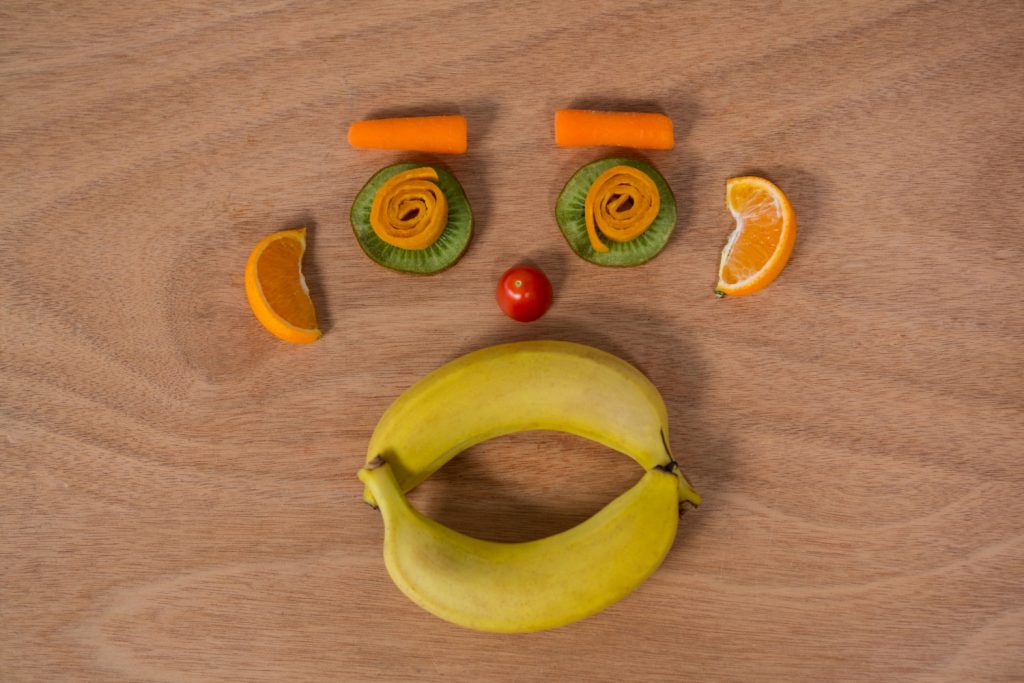We’ve all been there – standing in the grocery store aisle, torn between the organic kale and that tempting bag of gummy bears. While most of us think about how our food choices affect our waistline or energy levels, there’s another part of our body that’s quietly keeping score of every bite: our mouth.
Your teeth and gums are like that friend who remembers everything – they hold onto the memory of your dietary choices longer than you might expect. But here’s the thing that might surprise you: it’s not just about avoiding the obvious culprits like candy and soda. The relationship between what we eat and our oral health is way more complex and fascinating than the simple “sugar equals cavities” equation we learned as kids.
The Real Story Behind Food and Your Mouth
Let’s start with what actually happens when you eat. The moment food touches your teeth, you’re setting off a chain reaction that can either support your oral health or work against it. It’s like hosting a microscopic party in your mouth – and depending on what you’re serving, you’re either inviting the good guests or the troublemakers.
When we eat, our mouth’s pH level shifts. Think of pH as your mouth’s mood ring – it changes based on what’s happening inside. A balanced pH creates an environment where your teeth can stay strong and your gums can thrive. But certain foods can throw this balance off, creating conditions that make your mouth less comfortable for your teeth and more welcoming to bacteria that nobody wants hanging around.
The Surprising Foods That Love Your Teeth
Here’s where things get interesting. Some foods are like having a personal bodyguard for your teeth. Take cheese, for example – it’s not just delicious with crackers. Cheese contains calcium and phosphorus, which are basically the building blocks your teeth crave. Plus, it helps balance your mouth’s pH levels, kind of like having a built-in neutralizer for acids.
Leafy greens deserve their own fan club when it comes to oral health. Spinach, kale, and their green friends are packed with vitamins and minerals that support healthy gums. They’re also high in folic acid, which research suggests might help with gum health. And here’s a bonus: they require more chewing, which naturally helps clean your teeth and stimulates saliva production.
Speaking of saliva – it’s like your mouth’s unsung hero. Foods that make you produce more saliva are doing your mouth a huge favor. Crunchy fruits and vegetables like apples, carrots, and celery act like nature’s toothbrush. They help scrub away food particles and bacteria while boosting saliva flow.
Nuts are another powerhouse. Almonds, Brazil nuts, and cashews provide calcium, phosphorus, and healthy fats that support overall oral health. They’re also low in carbohydrates, which means they’re less likely to feed the bacteria that can cause problems.
The Foods That Make Your Mouth Work Overtime
Now, let’s talk about the foods that put your mouth in challenge mode. It’s not just the obvious suspects – though yes, sticky candies and sugary drinks definitely make the list. But some foods might surprise you.
Dried fruits, for instance, can be tricky. While they offer vitamins and nutrients, they’re also concentrated sources of sugar that tend to stick to teeth. It’s like giving bacteria a slow-release energy source. If you love dried fruits (and honestly, who doesn’t love a good dried mango?), just be mindful of when and how you eat them.
Citrus fruits present an interesting paradox. They’re packed with vitamin C, which is fantastic for gum health, but they’re also acidic. The acid can temporarily soften tooth enamel. This doesn’t mean you should avoid oranges and grapefruits – just maybe don’t brush your teeth immediately after eating them. Give your mouth about an hour to neutralize before brushing.
Starchy foods like bread, pasta, and chips can be sneaky. They might not taste sweet, but they break down into sugars in your mouth. Plus, they tend to get stuck in the crevices between teeth, giving bacteria more time to work with them.
The Timing Game: When You Eat Matters Too
Here’s something that doesn’t get talked about enough: when you eat can be just as important as what you eat. Your mouth goes through natural cycles throughout the day, and understanding these rhythms can help you make better choices.
Snacking throughout the day keeps your mouth in a constant state of flux. Every time you eat, your mouth’s pH drops, and it takes time to recover. If you’re constantly snacking, your mouth never gets a chance to return to its happy place. This is why nutritionists often recommend eating regular meals rather than grazing all day – it’s not just good for your metabolism, it’s good for your mouth too.
The worst time for your teeth might be right before bed. When you sleep, saliva production naturally decreases, which means your mouth’s natural cleaning system is working at reduced capacity. Late-night snacking, especially on sticky or sugary foods, can be particularly challenging for your oral health.
Drinks: The Liquid Landscape of Oral Health
Let’s dive into the liquid side of things, because what you drink plays a huge role in your oral health story. Water is obviously the hero here – it helps wash away food particles, keeps your mouth hydrated, and maintains saliva production. But it gets more nuanced from there.
Coffee and tea are complex characters in this story. They can stain teeth over time, and if you add sugar, that’s another factor to consider. But here’s the twist: green tea contains compounds called catechins that have been studied for their potential benefits to gum health. Black tea also contains fluoride naturally. The key is how you drink them – sipping slowly over a long period gives these beverages more contact time with your teeth than drinking them quickly.
Sports drinks and energy drinks are marketed as healthy, but they’re often high in both sugar and acid – a double challenge for your mouth. If you do drink them, maybe use a straw to minimize contact with your teeth, and rinse with water afterward.
Wine presents its own interesting case study. Red wine contains antioxidants that some research suggests might benefit gum health, but it’s also acidic and can stain teeth. White wine is actually more acidic than red wine, which might surprise some people.
The Gut-Mouth Connection: A Fascinating Link
Here’s something that’s gaining attention in recent research: the connection between your gut health and your oral health. Your mouth is actually the beginning of your digestive system, and the bacteria that live in your mouth can influence your overall digestive health, and vice versa.
Foods that support a healthy gut microbiome – like yogurt with live cultures, kefir, sauerkraut, and other fermented foods – might also support oral health. The probiotics in these foods could help maintain a balanced bacterial environment in your mouth.
Fiber-rich foods play a dual role here. They’re great for your digestive health, and they also require more chewing, which stimulates saliva production and helps clean your teeth naturally.
Practical Tips for Real Life
Let’s get practical because knowing all this information is only helpful if you can actually use it in your daily life. Here are some realistic strategies that don’t require completely overhauling your diet:
The Pairing Strategy: If you’re going to eat something that’s challenging for your teeth, pair it with something that’s helpful. Having cheese with wine, or nuts with dried fruit, or drinking water with your morning orange juice.
The Timing Strategy: Try to eat sweets and acidic foods as part of meals rather than as standalone snacks. Your mouth is already dealing with pH changes during meals, so it’s better to deal with it all at once rather than multiple times throughout the day.
The Rinse Strategy: After eating or drinking something acidic or sugary, rinse your mouth with plain water. It’s simple, but it helps dilute acids and wash away food particles.
The Chewing Strategy: Choose snacks that require chewing – raw vegetables, nuts, cheese. The mechanical action of chewing helps clean your teeth and stimulates saliva production.
The Social Aspect: Food, Culture, and Oral Health
Food isn’t just fuel – it’s social, cultural, and emotional. The goal isn’t to eliminate all the foods you love or to stress about every bite. It’s about understanding how different foods affect your mouth so you can make informed choices that work for your lifestyle.
Maybe you have pizza every Friday night with friends – that’s not just about food, it’s about connection and tradition. Understanding how foods affect your mouth doesn’t mean you have to give up these meaningful experiences. It just means you might choose to have a salad with that pizza, or rinse with water afterward, or be extra diligent about your oral care routine that evening.
Cultural foods often have wisdom built into them that supports oral health. Mediterranean diets rich in olive oil, nuts, and vegetables. Traditional Asian diets with green tea and fermented foods. Mexican cuisine with lime and cilantro. Many traditional food combinations actually support oral health in ways our ancestors might not have fully understood but intuitively practiced.
The Hydration Factor: Beyond Just Water
Staying hydrated is crucial for oral health, but it’s not just about drinking enough water (though that’s definitely important). It’s also about understanding how different beverages affect your mouth throughout the day.
Saliva is about 99% water, so when you’re dehydrated, your mouth suffers too. But interesting research suggests that certain beverages might actually support saliva production better than others. Warm beverages, for instance, might stimulate saliva production more than cold ones.
Herbal teas offer an interesting middle ground. They provide hydration without the acidity of coffee or the sugar of soft drinks. Chamomile tea, in particular, has been studied for its anti-inflammatory properties. Ginger tea might help with inflammation too.
The Antioxidant Connection: Foods That Fight Inflammation
Inflammation in the mouth is like having a constant low-level fire burning. Foods rich in antioxidants can help address this inflammation naturally. We’re talking about colorful fruits and vegetables – blueberries, strawberries, bell peppers, sweet potatoes.
The anthocyanins in berries, the lycopene in tomatoes, the beta-carotene in carrots – these compounds don’t just make foods colorful, they also have anti-inflammatory properties that can benefit your entire body, including your mouth.
Dark leafy greens deserve another mention here. They’re not just good for the reasons we talked about earlier – they’re also rich in antioxidants like vitamin C and vitamin E, which support healthy gums.
The Mineral Story: Building Blocks for Strong Teeth
Your teeth are living tissues that need specific minerals to stay strong. Calcium gets all the attention, but it’s really a team effort. Phosphorus, magnesium, vitamin D, and vitamin K2 all play important roles in how your body uses calcium effectively.
Dairy products are obvious sources, but if you don’t eat dairy, there are plenty of other options. Sardines and canned salmon (with bones) are excellent sources of calcium. Sesame seeds and tahini provide calcium and magnesium. Leafy greens offer calcium in a form that’s often well-absorbed by the body.
Vitamin D is crucial because it helps your body absorb calcium. You can get it from sunlight, fatty fish, and fortified foods. Vitamin K2, found in fermented foods and grass-fed animal products, helps direct calcium to where it’s needed – like your teeth and bones – rather than letting it accumulate in soft tissues.
The Sugar Reality Check: It’s More Complicated Than You Think
Let’s have an honest conversation about sugar. The “avoid sugar” advice is overly simplistic and not particularly helpful in real life. The truth is more nuanced and actually more empowering once you understand it.
All carbohydrates – whether from an apple, a slice of bread, or a candy bar – can be broken down into sugars by bacteria in your mouth. But the type of carbohydrate, how long it stays in your mouth, and what else you eat with it all make a difference.
Natural sugars in whole fruits come packaged with fiber, water, and nutrients. The fiber requires chewing, which stimulates saliva production. The water helps dilute the sugars. The nutrients provide benefits that help offset any challenges.
Processed sugars, on the other hand, are often in forms that stick to teeth or dissolve quickly, feeding bacteria efficiently. They also don’t come with the beneficial compounds found in whole foods.
This doesn’t mean you can never have processed sweets – it just means understanding the difference and making choices accordingly. Dark chocolate, for instance, contains compounds that some research suggests might actually benefit oral health, despite containing sugar.
Creating Your Personal Oral Health Food Strategy
Everyone’s mouth is different, just like everyone’s dietary preferences and lifestyle are different. The goal is to find a sustainable approach that works for your specific situation.
Start by paying attention to how different foods make your mouth feel. Do you notice that certain foods make your gums feel tender or cause your teeth to feel sensitive? Do other foods leave your mouth feeling clean and fresh? Your mouth is giving you feedback – learning to listen to it can be incredibly valuable.
Consider your schedule and eating patterns. If you’re someone who tends to snack throughout the day, focusing on tooth-friendly snacks might be more impactful than worrying about what you have for dinner. If you’re a coffee lover who sips slowly all morning, understanding how to minimize the impact of that habit might be more relevant than cutting out coffee entirely.
Think about your food preferences and cultural background. There’s no one-size-fits-all approach to eating for oral health. Mediterranean diets look different from traditional Asian diets, which look different from plant-based diets, but all can support oral health when planned thoughtfully.
The Long Game: Sustainable Habits for Life
The most important thing to remember is that oral health, like overall health, is about patterns over time, not perfection in individual moments. The goal is to create sustainable habits that you can maintain long-term, not to follow a restrictive approach that you’ll eventually abandon.
Small, consistent changes often have more impact than dramatic overhauls. Maybe you start by drinking water with your morning coffee, or having raw vegetables available for afternoon snacking, or rinsing your mouth after eating dried fruit. These small changes, practiced consistently, can make a meaningful difference over time.
Remember that food is just one piece of the oral health puzzle. Your overall oral care routine, stress levels, sleep quality, and genetics all play roles too. Focusing on food choices is important, but it’s not the only thing that matters.
Looking Forward: The Future of Food and Oral Health
Research into the connection between diet and oral health continues to evolve. Scientists are discovering new connections between oral health and overall health, between the mouth microbiome and the gut microbiome, and between specific nutrients and oral health outcomes.
Personalized nutrition based on individual microbiome analysis might become more common in the future. We might learn more about how food timing affects oral health, or discover new compounds in foods that benefit oral health in ways we don’t yet understand.
But while we wait for future discoveries, we can work with what we know now. The fundamentals – eating a variety of whole foods, staying hydrated, being mindful of timing, and paying attention to how foods affect your mouth – are solid strategies that are likely to serve you well regardless of what future research reveals.
Your mouth has been with you for every meal, every snack, every sip you’ve ever taken. It deserves the same thoughtful consideration you might give to other aspects of your health. By understanding how your food choices affect your oral health, you’re not just taking care of your teeth and gums – you’re investing in your overall well-being and quality of life.
The beautiful thing about this approach is that many foods that benefit your mouth also benefit your overall health. You’re not choosing between oral health and general health – you’re choosing an approach that supports both. And that’s a win-win that’s worth smiling about.

Disclaimer: The information provided in this article is for educational and informational purposes only and is not intended as professional medical or dental advice, diagnosis, or treatment. Always seek the advice of qualified healthcare professionals regarding any questions you may have about your oral health or medical conditions. Never disregard professional medical advice or delay seeking it because of information you have read in this article. Individual results and experiences may vary.
Sources: Information in this article is compiled from various published research studies, dental health organizations, and nutritional science literature available as of October 2024. Readers are encouraged to consult current research and healthcare professionals for the most up-to-date information on oral health and nutrition.



